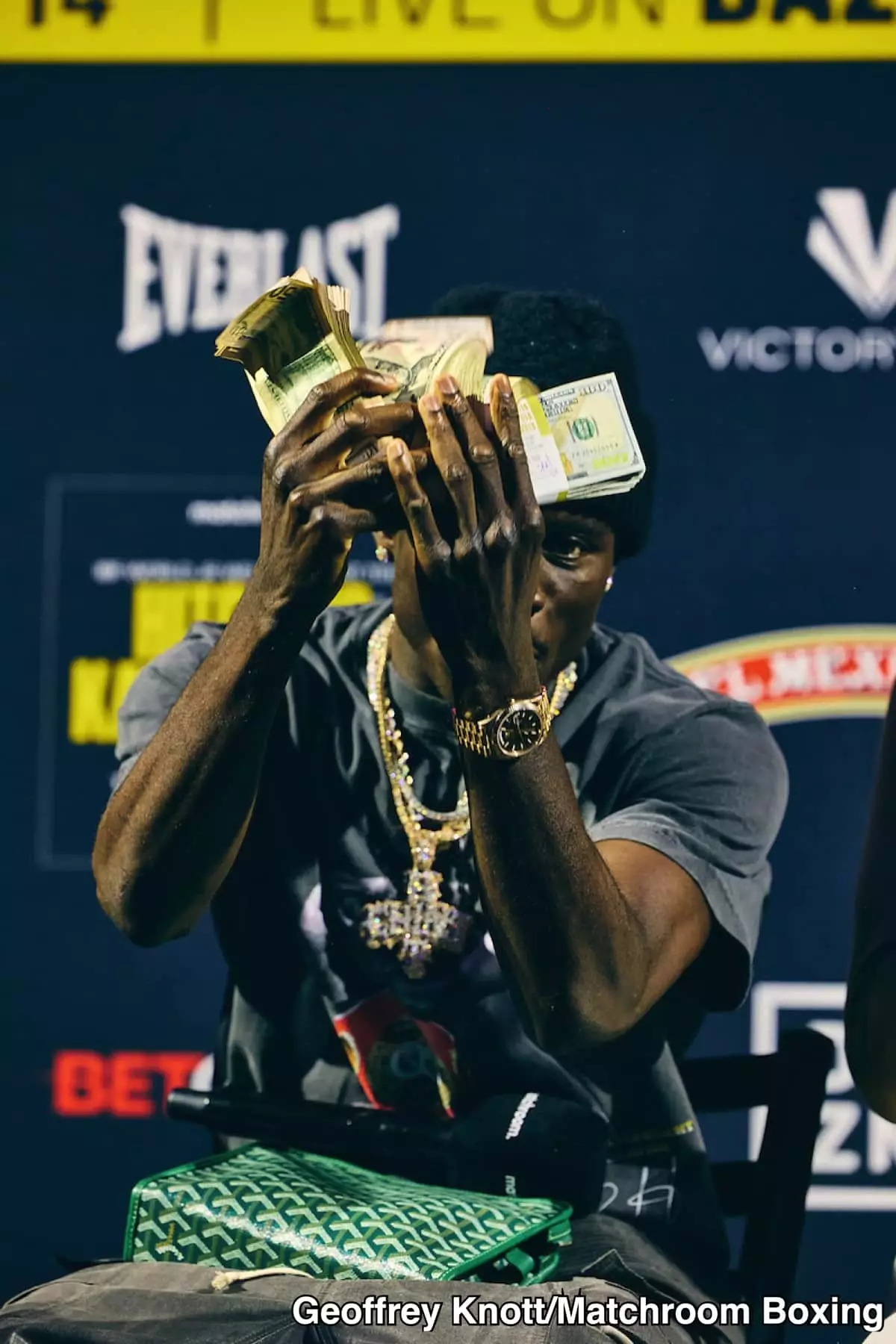In the high-stakes world of professional boxing, the labels and judgments cast by promoters, fans, and media can often overshadow the fighters’ true capabilities and styles. Richardson Hitchins, the reigning IBF champion in the 140-pound division, has recently found himself at the center of a heated debate regarding his fighting style, specifically being labeled as a “runner.” This term, often synonymous with avoidance and passivity in the boxing ring, can be detrimental, especially in an era where aggression and action are prized. Hitchins’ fight against George Kambosos Jr. on DAZN has ignited this discussion, challenging the assumptions around what defines a “good” fighter in today’s combat sports landscape.
Standing His Ground
Hitchins is not just any fighter; he embodies the essence of determination and skill. When confronted with the label of a “runner,” his response is one of defiance. He emphatically rejects the notion that he relies on evasive tactics, promising instead to be “right there in front” of Kambosos. This insistence not only serves as a statement of intent but also as a declaration of his confidence in his boxing prowess. By vowing to engage directly with Kambosos, he aims to shift the narrative and showcase his ability to deliver an entertaining, competitive bout.
The expectations Hitchins faces are heightened by the boxing community’s desire for thrilling matchups. Promoter Turki Alalshikh’s disdain for “boring fighters” underscores a pivotal truth about today’s boxing scene: fans crave excitement. This sentiment can drive fighters to modify their ingrain strategies to fit public perception, often at the expense of their authentic fighting style. Hitchins’ commitment to engage his opponent head-on poses an intriguing paradox: will he maintain his technical edge while also satisfying the audience’s thirst for action?
Hitchins vs. Kambosos: A Clash of Styles
The impending showdown between Hitchins and Kambosos presents a fascinating clash of styles. While Hitchins is recognized for his superior technical skills and ring intelligence, Kambosos is celebrated for his toughness and relentless pursuit of victory. Kambosos’ experience as a former lightweight champion adds an unpredictable dynamic to the fight, implying that if Hitchins does not stick to his word, he risks being drawn into Kambosos’ gritty, physical game.
However, the prospect of this fight hinges on Hitchins’ ability to deliver on his promise. Should he choose to engage directly with Kambosos, observers could witness a compelling battle that deviates from the norm, where strategy meets raw aggression. A close-quarters fight, often likened to “phone-booth” boxing, could expose the vulnerabilities of both fighters while creating an unpredictable spectacle for fans.
Implications Beyond the Ring
Beyond just this upcoming fight, the broader implications of Hitchins’ stance against being labeled as a “runner” reflect significant themes in the boxing world. Athletes are often pigeonholed into narrow definitions that do not encompass their full range of abilities or fighting styles. By challenging this categorization, Hitchins is not only standing up for his brand but also initiating a conversation about how fighters can redefine their narratives in line with their skills and aspirations.
The stakes are undeniably high, not just for Hitchins and Kambosos, but for the fans anticipating a showdown that could reinforce or overturn preconceived notions about fighting styles. As the fighters step into the ring, the focus will be on whether Hitchins can maintain his resolve and deliver a fight that might redefine his career while satisfying the demands of a passionate boxing audience.

